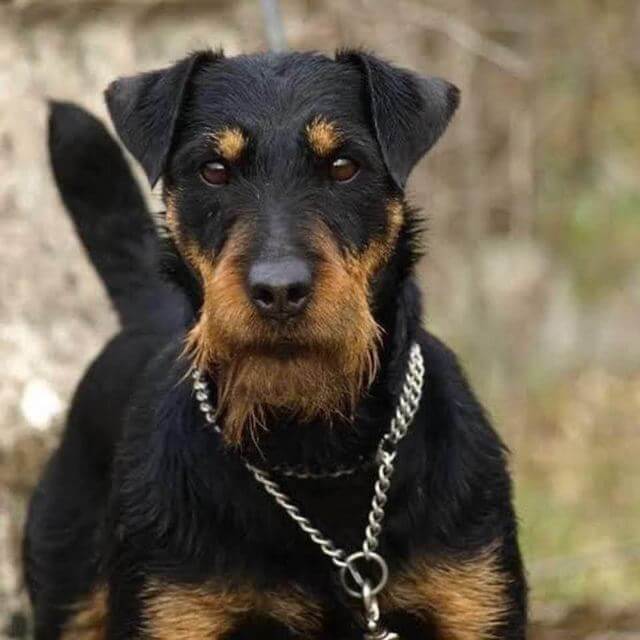
Home » Precision German Engineering an Introduction to the Jagdterrier
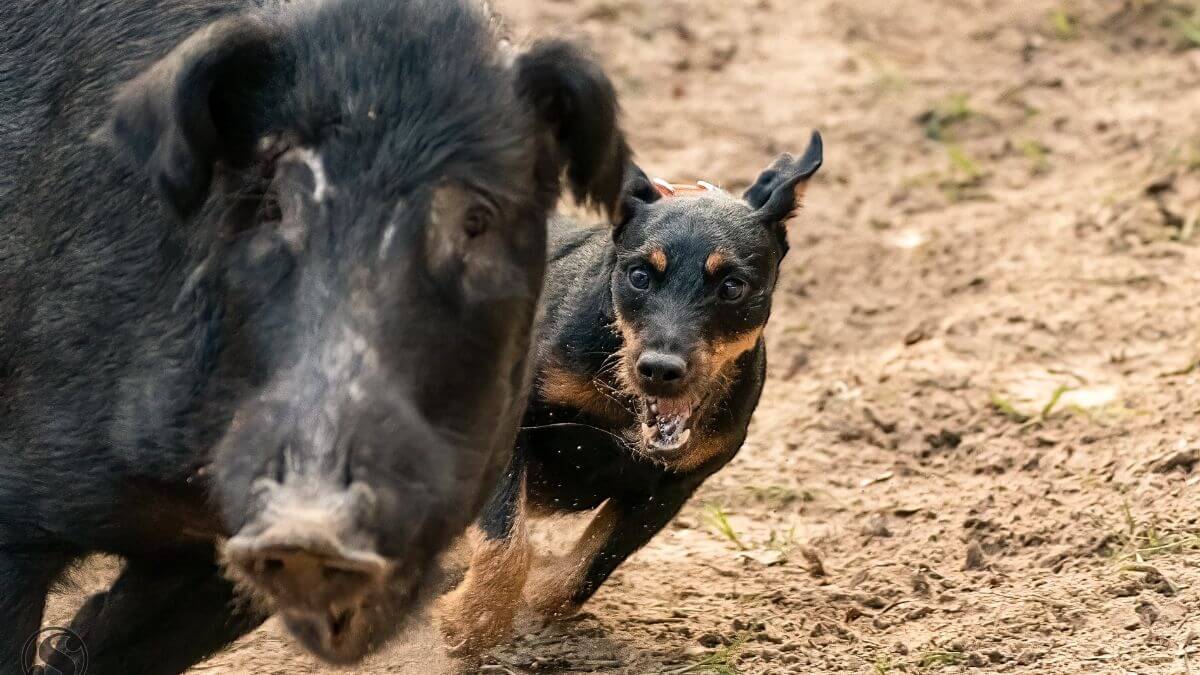
It is not a fine car like a Mercedes or an Audi. Not a Volkswagen, a fine tool, watch or precision machine. It’s a breed of dog that is as unique and well-suited to its designated vocation as any other well-engineered device (and a great deal better than most).
The first step in understanding the Jagdterrier is the correct pronunciation of its name. It’s guttural and has two distinct Ts. “YAKT terrier.” This should present no problem if you speak fluent German or have ever entered a spitting contest. The alternative name is German Hunt Terrier, but it’s nowhere near as much fun.
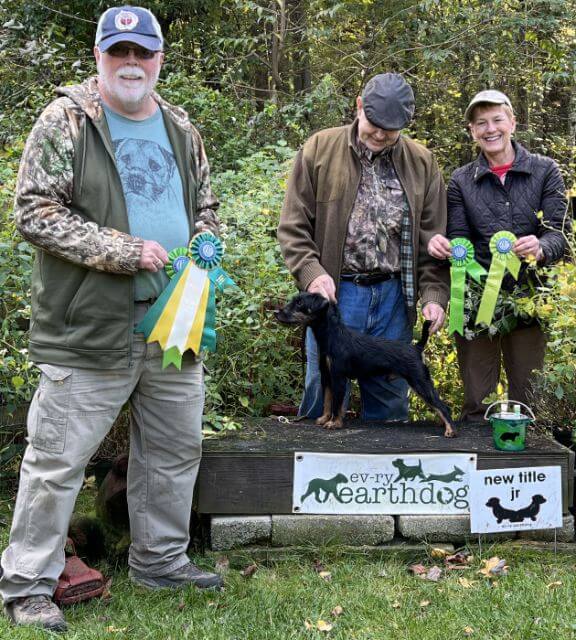
While the origin and original purpose of many breeds is shrouded in mystery, the evolution of the Jagdterrier is both relatively recent and well documented. Following the end of World War I, a group of dedicated German hunters sought an alternative to the Fox Terrier that would be better suited to German styles of hunting and to the particular terrain of the countryside in which they would hunt. The progenitors of the breed were imported from England and are variously described as Black and Tan Hunting Terriers or Old English Fox Terriers. These four dogs found themselves under the stewardship of Lutz Heck, then the manager of the Berlin Zoo. Lutz’s hobby was the recreation of seemingly extinct breeds of cattle. Carl Grunewald, a self-styled cynologist, soon came aboard as did Chief Forester R. Fless and Dr. Herbert Lackner. These were powerful men at the time who had the political and financial resources to establish a breeding kennel that was reported to contain over 700 animals. Animals were neither sold nor drafted, and the focus was entirely on developing and stamping type on a superior terrier that would measurably excel in the hunt field.
That whole scenario might repel us today, but it is exactly the same methodology used by the recognized hunts of England and early America to produce a scent hound ideally suited to hunting in packs through the densest and most impenetrable cover. The only difference was many fewer people and a couple of decades as opposed to several hundred years. The result, too, is exactly the same.
So today we have the Jagdterrier which to the AKC is an emerging breed. It is also known in various parts of the world as the Lovaki Terrier, the Deutscher Jagdterrier, and the Nemški Lovski Terier, (and a variety of less than printable names that I use myself). There is no AKC Breed Standard as yet, but there are both UKC and FCI Standards and the breed is shown sparingly in Europe.
For the most part, the breed carries a rather stable type and there is no mistaking the black or dark brown color and the distinctive markings. There’s no mistake either in the energy level displayed by virtually all members of the breed. There is never a doubt that these are purpose-bred animals and that purpose must be kept in mind as much by the owner as it is by the dog.
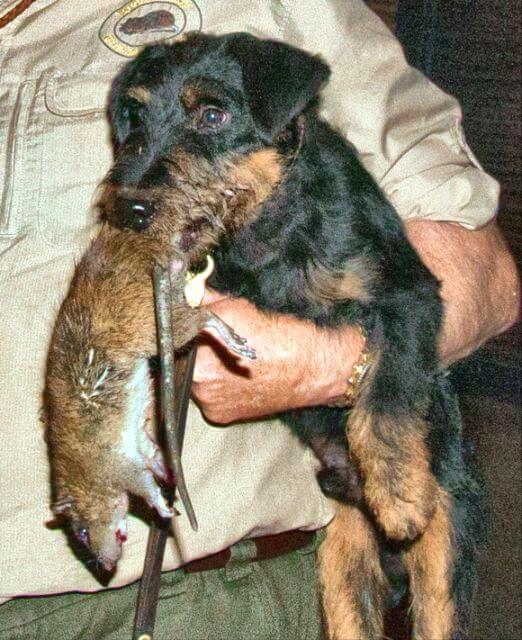
The Jagdterrier was conceived to be used for earthwork of badger and fox. For this reason, the FCI Standard has a height range between 33 cm (12.99 inches) and 40cm (15.748 inches). Over- or under-sized is a disqualification. Badger and fox dens in Europe have been used for ages and are much larger than what we have in North America. Earthwork in North America requires a dog at the smaller end of standard.
The FCI Standard also sets forth specific proportions for girth measurements (around the chest) with respect to height. “The circumference of the chest is 10 to 12 cm more than the height at the withers.” This is more specific than the American and English
concept of “spanning” a terrier, which is often misused and misunderstood. The whole concept here is to allow the dog to work its way up to the quarry in a narrow underground tunnel.
In North America, the versatility of the Jagdterrier has proven to be somewhat averse to the preservation of its breed type. A few of us use the breed to go to ground for woodchuck, fox, and raccoon, but Jagds are also frequently seen doing blood trailing for deer recovery, retrieving upland birds, and, of course, ratting. Water retrieves and the treeing of raccoons is another skill of the breed. The breed has proven popular with falconers who use them to locate and bolt quarry, mostly rabbit and squirrel. Other Jagds are effectively coursing Coyote in Northern Michigan, and more than a few are dedicated to hunting wild boar in the Southern US. This diversification of purpose has produced some very useful dogs, to be sure, but has also contributed to a very dramatic increase in the average size of the breed.
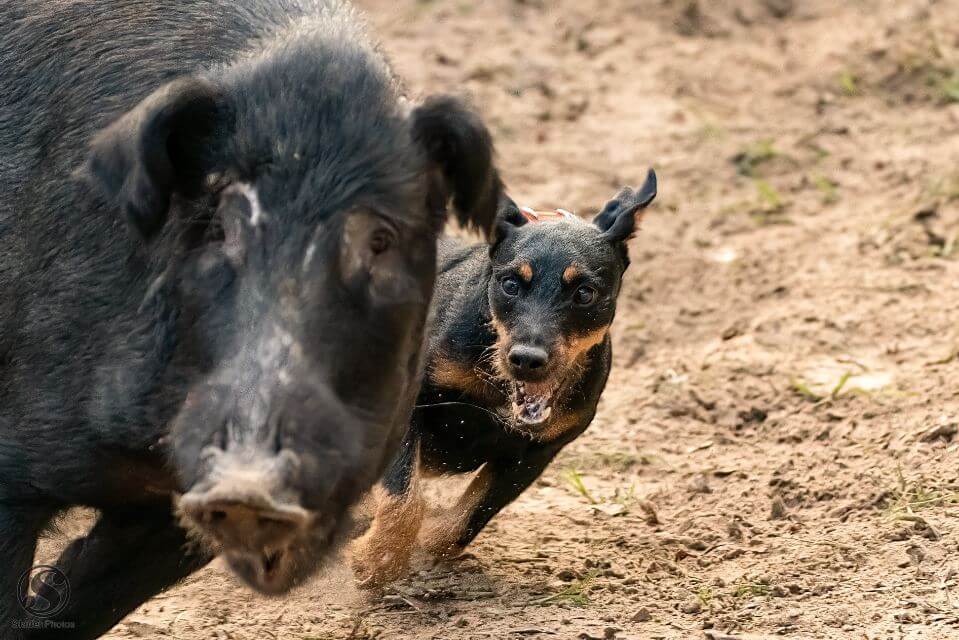
In a recent long-term commercial project, Jagds were found to be the ideal breed to serve as detection dogs to locate rodents in warehouses of foodstuffs and other commodities. Their small size, acute sense of smell, and high prey drive enable them to work efficiently for long hours in confined spaces. In this line of work, they require only minimal training and far exceed other breeds in their attention span and diligence. Think about locating a single mouse in a 1.7 million square foot warehouse and you get the idea. Their suitability for this type of work is not lost on law enforcement who have acquired and successfully trained the dogs for both explosives and drugs.
None of this is meant to infer that you can’t keep a Jagd as a pet. You can, but it also requires an ongoing outlet for that prey drive that is ingrained in its genes. Jagds are kind of likable and harbor no ill will to humans. They are (almost) universally good with kids and are smart as hell. The problem arises with anything else that has a pulse. It’s for this reason that most breeders today will sell puppies only to people with proven, current, hunting experience. To do otherwise almost always ends up with the dog being surrendered to a pound. They are escape artists that, when bored, are intent on wreaking havoc wherever possible.
Whether or not you support the method by which the Jagdterrier was developed and type-stamped, it was, by all indications, successful. As Conformation breeders we are often criticized for breeding to trends, emphasizing irrelevant breed points and features and destroying the overall health and working ability of various breeds. In more than a few cases, they may be right. (But they universally overlook all the good that we do and the millions that we contribute to canine health research.) The pendulum, however, swings both ways, and the hunters tend to focus on the working characteristics of a breed and, as long as the dog can do its job at all, may disregard important characteristics that ensure the continuation of that precision German engineering.
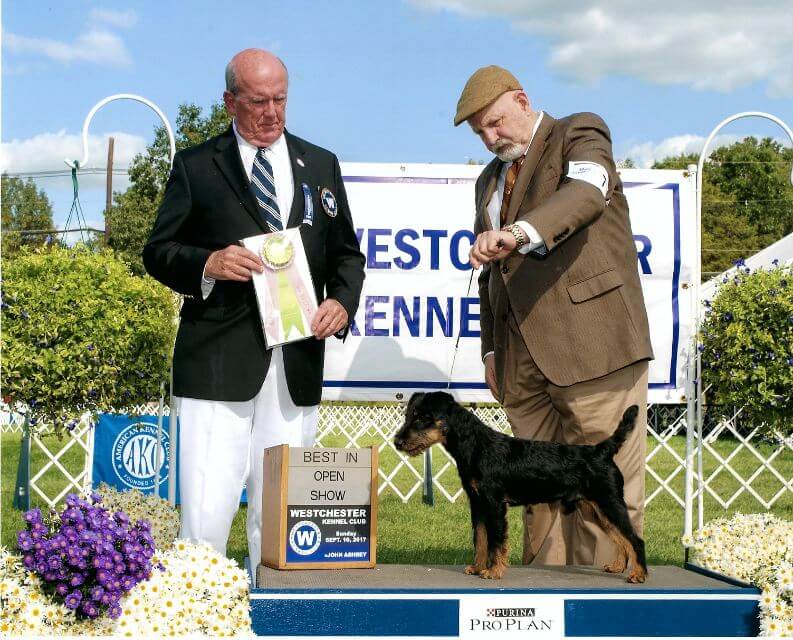
Many breeds have met this challenge by incorporating working tests into the requirements for breeding. Mostly found in Europe, we have a bit of this concept in the numerous performance tests and trials offered by the AKC and several other registries. A performance test will never equal the real thing, but it does lend some credibility to that CH or GCH in front of a dog’s name. Contrast this to the numerous “versatility” awards encouraged by parent clubs that don’t directly focus on the breed’s primary purpose which, if misused, could possibly, over time, detract from breed type.
At any rate, we are happy to revisit the precision German engineering that is the Jagdterrier. It should never be a first dog, a mere pet, or a couch potato. For those who are up to the challenge, though, owning and working (and yes, occasionally showing) a Jagd can be a very rewarding (and life changing) experience.
